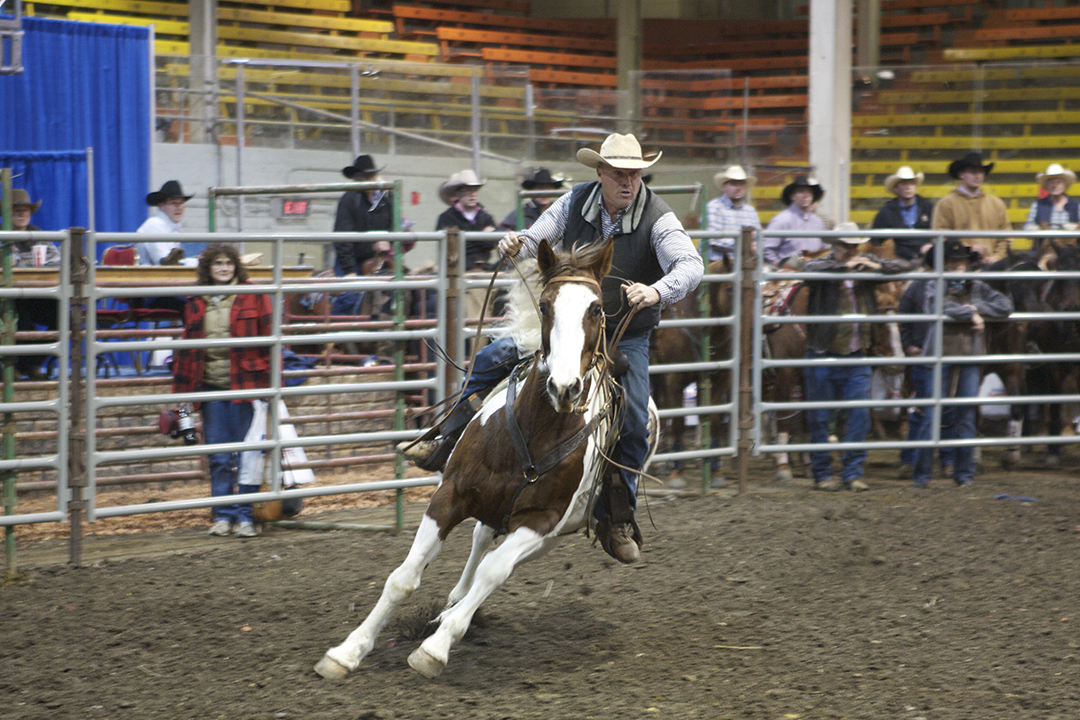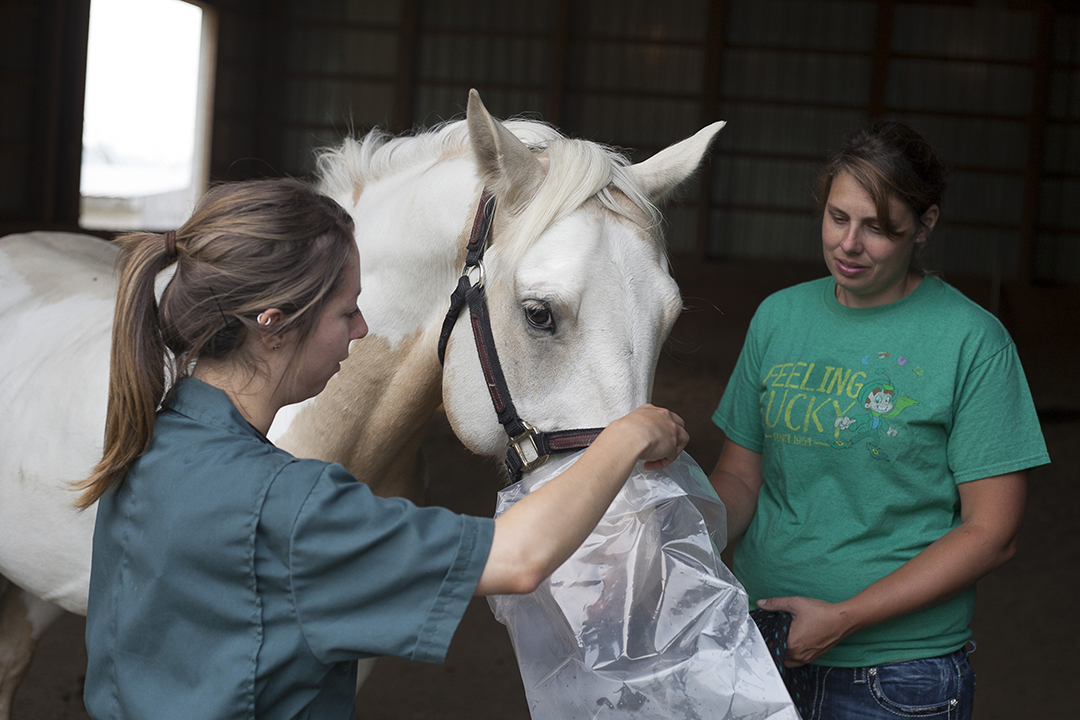General information
Definition

Equine asthma (formerly known as recurrent airway obstruction or heaves) is a respiratory disease caused by hypersensitivity in the lungs to airborne dusts and moulds.
For a more comprehensive definition, please read the American College of Veterinary Internal Medicine's (ACVIM) consensus statement on inflammatory airway disease of horses.
How do horses develop asthma?
Horses can develop asthma when they’re exposed to airborne organic dust that can found anywhere — in a dirt paddock, on a gravel road or in an indoor arena. But the most common culprit is dusty, mouldy hay. Round bales can be particularly problematic: horses tend to tunnel their muzzles into the bales and inhale dust and mould, and owners may miss identifying a mouldy bale before feeding.
What are the clinical signs?
Only horses with severe equine asthma have obvious clinical signs at rest. Affected horses usually have a chronic cough that may occur randomly or while eating or exercising. In addition, they’re often intolerant of exercise, have nasal discharge and have more laboured breathing.
More severely affected horses may have a “heave line,” a ridge of muscle along the abdomen that develops because of the overuse ofrespiratory muscles.
What should I do?
Call your veterinarian if you notice any signs of respiratory distress in your horse. If equine asthma is identified before any permanent damage is done to the lungs (mild to moderate asthma), your horse can continue to breathe easy with proper treatment and management. However, once changes occur in the lung (severe asthma), there is irreversible damage.
Diagnosis

Your veterinarian will listen to your horse’s lungs using a stethoscope and a re-breathing bag (a plastic bag placed over the horse’s muzzle). Some abnormal sounds that may be present in the lungs of a horse with asthma include harsher, louder lung sounds, wheezes and a tracheal rattle (indicating mucus in the trachea).
To accentuate these abnormal sounds, your veterinarian may place a re-breathing bag over the horse’s muzzle and allow it to breathe in to the bag for a minute or two. Re-breathing the expired air encourages the horse to breathe deeper.
In some cases, the history of the horse’s problem and physical exam can be enough for your veterinarian to start treating your horse for asthma. However, to make a definitive diagnosis, it’s necessary to perform a bronchoalveolar lavage (BAL). The BAL procedure, which is very safe for the horse, allows your veterinarian to determine the severity of the inflammation in the lungs. It also provides baseline information that can help clinicians determine if your horse is improving with treatment. It may also be necessary to perform a tracheal wash to rule out pneumonia, an infection in the lungs.
Treatment
The most important part of asthma treatment is environmental management to remove the triggers for asthma. Without this critical measure, drug therapies will not work.
Veterinarians often use drug therapy — a combination of corticosteroids and bronchodilators — to treat horses during acute episodes of respiratory difficulty. Corticosteroids decrease inflammation, while bronchodilators act in the lung to open up the airways of horses experiencing respiratory distress.
Both steroids and bronchodilators come in oral, inhaled or injectable formulations. Oral and inhaled formulations are effective but have different benefits. The inhaled formulations are administered to the horse using a mask or nostril adapter. Once the horse inhales the drugs into its lungs, the medication acts directly at the site of inflammation. The result is a faster response to therapy and fewer side effects as the drug isn’t distributed to the whole body.
The Aservo® EquiHaler® is the first licensed inhalation therapy for severe asthma that's available through veterinarians. Developed by Boehringer Ingelheim Animal Health, the product uses ciclesonide, a corticosteroid, with a unique inhalant delivery system.
Potential side effects
High doses of corticosteroids over a prolonged period can suppress the immune system and potentially cause laminitis, particularly in horses that are overweight or otherwise predisposed to laminitis. Other side effects of steroid use include worsening of infections that are already present or the development of new infections while being treated. It’s uncommon for side effects to occur with bronchodilator therapy, but it’s still important to use these drugs judiciously.
Prevention
Environmental management of asthma is based on reducing the horse’s exposure to dust and mould. Here are some management changes that can benefit horses with asthma:
- Feed a low-dust feed such as pelleted complete feed, hay cubes or soaked hay
- Use square bales rather than round bales as they are less prone to accumulate mould
- If feeding from a round bale, unroll the bale, fork off the hay, and inspect it for dust and mould
- Keep horses outdoors as much as possible, ideally in a low dust environment
- If horses are stabled, ensure good ventilation to prevent an accumulation of dust, mould and other airway irritants such as ammonia
- Use shavings rather than straw for bedding as straw bales tend to accumulate dust and mould
EquineED Talk
As part of the WCVM's EquineED Talks series for the horse community, WCVM associate professor Dr. Julia Montgomery gave the following presentation on equine asthma.
News
Horse Health | WCVM
Equine asthma-related stories
- Study may offer therapy for heavey horses
- Studying the airway microbiome in horses
- Study sets standard for equine lung research
Loading...

